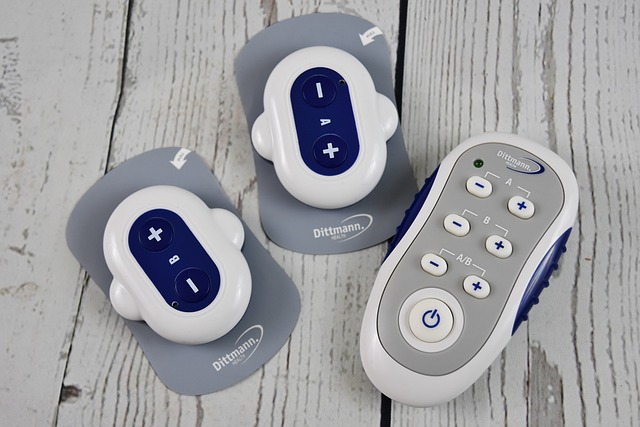Contrast therapy, an effective sports medicine approach, alternates hot and cold treatments to boost athletic recovery, performance, and injury prevention. Athletes should prepare their bodies through light exercise or dynamic stretching and maintain a clear mindset. Key factors for successful contrast therapy include understanding optimal timing, maintaining specific temperature ranges (104°F to 59°F), and adhering to consistent 3-minute hot/cold cycles. Monitoring progress through physiological indicators allows athletes to adjust protocols for tailored, optimal recovery and performance enhancements. Incorporating contrast therapy as a game-changer, athletes can make informed decisions about their training regimens based on continuous assessment.
Discover the transformative power of contrast therapy for athletes, a science-backed approach to enhance performance and accelerate recovery. Learn how alternating between hot and cold temperatures can reduce inflammation, alleviate muscle soreness, and improve circulation. This comprehensive guide covers everything from understanding the benefits to mastering application techniques and monitoring progress. Prepare your body and mind for an effective, safe contrast therapy session tailored to athletes’ unique needs.
Understanding Contrast Therapy for Athletes
Contrast therapy, a powerful tool in sports medicine, involves alternating between hot and cold treatments to enhance recovery and performance among athletes. By exposing muscles to varying temperatures, blood flow is stimulated, promoting healing and reducing inflammation. This method is particularly beneficial for athletes aiming to minimize post-workout muscle soreness, speed up recovery times, and improve overall performance.
For athletes, contrast therapy offers a natural way to support their bodies in between intense training sessions or competitive events. It helps flush out metabolic waste products from working muscles, providing a quicker return to training and reducing the risk of injuries associated with delayed onset muscle soreness. Incorporating this technique into their routine can give athletes an edge, ensuring they stay in top form while pushing their physical limits.
Preparing Your Body and Mind for Treatment
Before diving into contrast therapy, athletes should prepare both their bodies and minds for treatment. Physically, this involves ensuring your muscles are warmed up and your circulation is optimal. Contrast therapy works best when your body is ready to receive the intense stimulation. Therefore, before starting, consider engaging in light exercise or dynamic stretching to increase blood flow and promote muscle flexibility.
Mentally, contrast therapy requires a commitment to embracing discomfort. Athletes should approach the treatment with a clear mindset, understanding that temporary soreness is part of the process. Visualizing success and focusing on the therapeutic benefits can help prepare your mind for the challenge ahead, enhancing overall effectiveness.
Applying Contrast Therapy Techniques Effectively
Applying Contrast Therapy Techniques Effectively
For athletes, contrast therapy is a powerful tool to enhance recovery and performance. The key to effective application lies in understanding when and how to use it. Timing is crucial; post-exercise or after intense training sessions are ideal periods for contrast therapy as it helps flush out metabolic waste products and reduce muscle soreness. Athletes can alternate between hot and cold treatments, with temperatures typically ranging from 104°F (40°C) to 59°F (15°C). A recommended approach is the 3-minute rule: immerse yourself in hot water for three minutes, followed by three minutes in cold water. Repeat this cycle several times, ensuring proper ventilation throughout.
Consistency and duration are also essential. Incorporating contrast therapy into a regular post-workout routine allows athletes to reap its benefits over time. It’s not just about the temperature change; the body’s natural response to contrast therapy stimulates blood flow, reduces inflammation, and promotes muscle repair. For optimal results, athletes should aim for at least 15-20 minutes of treatment per session, allowing enough time for both hot and cold exposures. Remember, proper technique and a tailored approach based on individual needs will ensure safe and effective contrast therapy application.
Monitoring Progress and Recovery After Session
Monitoring progress and recovery after a contrast therapy session is crucial for athletes looking to maximize the benefits. By tracking physiological indicators such as heart rate, blood pressure, and muscle soreness, athletes can gain insights into their body’s response to the treatment. Regular monitoring allows for adjustments in contrast therapy protocols, ensuring optimal recovery times and performance enhancements tailored to individual needs.
Additionally, paying close attention to changes in energy levels, flexibility, and overall athletic performance provides valuable data on the effectiveness of contrast therapy. This continuous assessment enables athletes to make informed decisions about their training regimens, incorporating contrast therapy as a game-changer for muscle repair, injury prevention, and speedier recovery times.
Contrast therapy for athletes offers a powerful tool for recovery and performance enhancement. By understanding the science behind it, preparing both body and mind, applying techniques effectively, and monitoring progress, athletes can safely harness its benefits. Incorporating contrast therapy into your routine could be the game changer you need to achieve peak physical condition.
